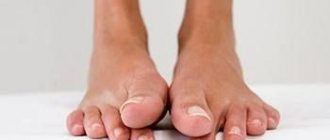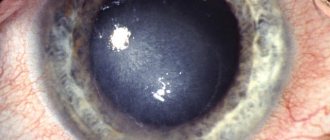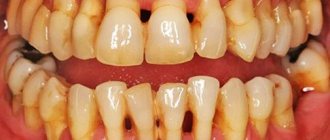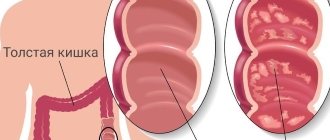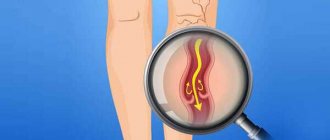The problem of osteoporosis existed in all periods of human development, but in the 20th-21st centuries the disease acquired the character of a “silent epidemic”. In modern medicine, osteoporosis is considered as a systemic disease, the main signs of which are structural changes in the microarchitecture of bone tissue and a decrease in bone mineral density (BMD). If a patient is diagnosed with osteoporosis, treatment is prescribed immediately. Without complex therapy, the disease is prone to steady progression and a decrease in BMD to critical levels, which is associated with a high risk of fractures.
Osteoporosis is not only a medical, but also a social problem. According to statistics, the disease ranks 4th in prevalence, second only to diabetes, cardiovascular diseases and cancer. Advanced osteoporosis is characterized by high mortality and disability.
Another important aspect is a significant decrease in the patient’s quality of life. In fact, doctors often assess the severity of the disease and the effectiveness of prescribed treatment methods only based on laboratory and instrumental data, forgetting about the patient’s well-being and complaints.
Causes of the appearance and development of the disease
Diffuse osteoporosis is a metabolic disease of bone tissue, characterized by a progressive decrease in its density. An important role in its development is played by the natural loss of mineral density, which increases with age. That is why the disease is mainly observed in the elderly. However, there is no equal sign between old age and osteoporosis.
There are a number of risk factors that contribute to the earlier onset of the disease and its rapid progression:
- presence of bad habits – smoking and alcohol abuse;
- impaired motor activity – sedentary lifestyle, lack of any physical activity;
- improper diet - monotonous, mostly refined food (sugar, white flour products), lack of all elements necessary for the body in the diet;
- deficiency of calcium, phosphorus and vitamin D - can be caused by a lack of these elements in the diet, insufficient sun exposure, or other reasons (endocrine diseases, absorption pathologies, etc.);
- underweight, overweight (obesity);
- Osteochondrosis of the spine and arthrosis of the hip joints increase the risk of osteoporosis in the corresponding part of the spine and femoral necks.
Risk factors also include being Caucasian, a history of frequent fractures and injuries, and female gender. The listed factors were selected on the basis of large-scale multicenter studies and are reflected in all clinical recommendations for the diagnosis and treatment of the disease.
Gender is one of the most significant risk factors that cannot be modified. The causes of the disease in women over 50 years of age are hormonal changes in the body caused by menopause.
The increased risk of osteoporosis in women is associated with significant changes in endocrine regulation throughout life. Normally, estrogens, which are actively synthesized during puberty, prevent resorption (destruction, resorption) of bone tissue. Estrogens maintain homeostasis (constancy) and the balance of metabolism in the bones during the reproductive period, but with the onset of menopause, their concentration drops sharply. Estrogen deficiency, especially estradiol deficiency, leads to a decrease in mineral density due to increased bone resorption.
Many researchers are of the opinion that the likelihood of developing osteoporosis is influenced not by the fact of menopause itself, but by the duration of estrogen deficiency: the longer it is, the higher the risk of the disease. For example, among two women of the same age, the likelihood of osteoporosis is higher in the one who entered menopause earlier.
According to various researchers , every second to fourth woman over 51 years of age is diagnosed with diffuse osteoporosis after examination . For comparison, in men in this age group the incidence of the disease is 3 times lower. At the same time, the most common localization of the pathological process is the spine, which is associated with a more rapid loss of the cancellous component of the bone compared to the compact substance. The structure of the vertebral bodies of the thoracolumbar region is characterized by the predominance of spongy substance, and with its sharp decrease, osteoporosis of the spine occurs.
In 15-20% of cases, osteoporosis is in no way associated with all of the listed factors. In such situations it is called secondary, i.e. arising from existing diseases or exposure to negative external factors.
Possible causes of the secondary form of the disease:
- endocrinopathies associated with changes in hormonal status (hyperthyroidism, hyperparathyroidism, hyperprolactinemia and others);
- diseases of the gastrointestinal tract;
- genetic and autoimmune diseases;
- diabetes;
- liver and kidney pathologies;
- blood diseases;
- anorexia nervosa;
- taking certain medications (glucocorticosteroids, aluminum preparations, statins).
Prolonged immobilization (lack of movement for medical reasons) can also be a trigger for the development of the disease. The need for constant bed rest arises after severe injuries, fractures and operations, ischemic and hemorrhagic strokes, with dementia and other severe neurological or mental illnesses.
Reasons for women
Osteoporosis is a disease that develops under the influence of many risk factors. There are primary and secondary osteoporosis. Primary osteoporosis develops with age. The reasons are considered to be:
- Complicated family history;
- Mature age;
- Short stature;
- Early menopause and late onset of menstruation;
- Instability of the menstrual cycle;
- Infertility;
- Breastfeeding for longer than one and a half years;
- History of bone fractures;
- Taking hormonal medications;
- Low physical activity;
- Pathology of the endocrine system (thyrotoxicosis, hyperparathyroidism, type 1 diabetes mellitus);
- Excessive drinking and smoking.
Secondary osteoporosis can be caused by the following diseases:
- Itsenko-Cushing's disease and syndrome;
- Thyrotoxicosis;
- Rheumatoid arthritis;
- Diabetes mellitus type 1;
- Conditions after gastric resection,
- Chronic renal failure;
- Chronic liver diseases.
There is a high risk of developing osteoporosis in people taking medications whose side effect is weight loss (immunosuppressants, glucocorticosteroids, anticonvulsants, gonadotropin-releasing hormone antagonists, aluminum-containing antacids).
Smoking, alcohol abuse, caffeine, excess or insufficient physical activity are factors that can cause osteoporosis. The likelihood of developing osteoporosis is higher in people who eat insufficient amounts of calcium, vitamin D, a lot of meat, or cannot tolerate dairy products. Generally recognized factors that increase the risk of developing osteoporosis are the presence of osteoporosis in parents, sisters and brothers, early menopause, and a sedentary lifestyle. Make an appointment
Symptoms of osteoporosis
The main reason for the late diagnosis of osteoporosis is the blurred clinical picture and minor symptoms that do not cause significant discomfort to the patient. This leads to delayed seeking of medical help. Another reason for late detection of the disease is the human factor. Osteoporosis is more typical for patients in the older age group, who tend to attribute existing symptoms to their advanced age.
Unfortunately, about half of the cases of the disease are detected only at the stage of complications - when pathological fractures appear. It is at this stage that the symptoms of osteoporosis become pronounced and depend on the location of the fracture.
The first nonspecific signs of the development of osteoporosis are symptoms of latent or overt calcium deficiency. These include:
- decreased performance and increased fatigue;
- paresthesia (crawling “goosebumps”, tingling) and muscle twitching;
- excessive dry skin and brittle nails.
Warning should be caused by progressive changes in posture, the appearance of spinal curvatures, and dental problems (periodontal disease, progressive atrophy of the alveolar processes with loss of teeth).
Spinal osteoporosis has a variety of symptoms. The first visible signs of the disease are: changes in posture and a progressive decrease in height (2 cm or more in the last 12 months or 4 cm over a lifetime). If osteoporosis of the spine exists for a long time and occurs with serious complications (compression fractures of the vertebrae), then over time the deformation of the spinal column becomes pronounced. Thus, in the thoracic region a “widow’s hump” is formed - a kyphotic curvature, and in the lumbar region the physiological deflection is smoothed out.
Osteoporosis of the spine leads to persistent back pain that lasts from several months to several years. They are localized in the thoracic or lumbar region. The disease is characterized by increased pain while standing or moving , and lying on the bed they gradually subside and practically do not bother you. Osteoporosis of the spine is also sometimes accompanied by tension in the muscles of the back and shoulder girdle.
Signs
Osteoporosis is a dangerous disease, since its initial stages can be asymptomatic. However, doctors identify the following symptoms, the presence of which indicates possible osteoporosis:
- Increased fatigue and weakness for no apparent reason;
- Convulsive syndrome;
- Increased amount of dental plaque;
- Poor posture;
- Brittle nails and hair;
- Dry skin.
These symptoms are not specific, so patients seek medical help late.
Signs of osteoporosis in women remain unnoticed by either the patient or her relatives for quite a long time. Almost the only symptom of osteoporosis in women that attracts attention is pain. Patients complain of pain in the spine, in particular in the thoracic and lumbar regions. As a result, there is a limitation in the range of motion of these joints. The progression of the disease leads to changes in posture, and the patient’s height gradually decreases. But almost all patients associate these symptoms of osteoporosis with old age, heavy physical labor or lack of physical activity, so they do not turn to a specialist.
The reason for visiting a doctor is usually fractures. The most favorite place for a fracture in osteochondrosis is:
- Femoral neck;
- Vertebral bodies;
- Radius.
Almost half of cases of hip fracture lead to disability, and every fourth fracture is fatal.
Make an appointment
Degrees of osteoporosis
Osteoporosis of the spine and the severity of changes in it are assessed according to instrumental studies. After calculating many quantitative indicators, the doctor determines the degree of the disease.
Spinal osteoporosis has two classifications: according to the severity of deformation of the thoracolumbar vertebral bodies according to HK Genant and according to the degree of severity (K. Kruse, 1978).
Genant classification:
- stage 0 – there are no visible changes in the vertebrae;
- stage 1 – minor deformation due to a decrease in the height of the vertebra on one side (front, back, right or left) by 20-25%, but not more than 10-20% overall;
- stage 2 – moderate deformation: decrease in the height of one part of the vertebral body by 25-40% and a general decrease by 20-40%;
- stage 3 – significant deformation: reduction in the height of any area of the vertebral body by 40% or more.
General classification of the severity of vertebral osteoporosis according to Kruse:
- 0 degree – there are no changes in the vertebral bodies;
- 1st degree – borderline stage; osteoporosis of the spine is doubtful, but there are initial changes in the form of reduction of transverse trabeculae;
- 2nd degree – decreased bone density and radiologically determined transparency of the vertebral bodies, the presence of sharply striated vertical trabeculae;
- 3rd degree – pronounced resorption of bone tissue and the appearance of a wedge-shaped or biconcave deformity of the vertebra due to compression of the supporting platforms;
- 4th degree – terminal osteoporosis of the spine; sharp transparency of bone tissue, called “glass vertebrae”, wedge-shaped deformation of several vertebrae.
Treatment of the disease
Osteoporosis therapy includes the following main complementary stages.
- Initially, treatment is prescribed for the main diseases that contribute to the appearance of osteoporosis, namely: hypothyroidism, hypogonadism, thyrotoxicosis.
- Treatment aimed at gaining bone mass (calcium, vitamin D, bisphosphonate drugs).
- Medicines that help reduce pain.
In the context of this article, the issues of treating the underlying disease will not be fully and in detail covered; this will take a lot of time. Next, we will talk about a modern method of treating the disease, which is aimed at increasing bone mass.
Types of osteoporosis
There are several classifications of the disease, but in clinical practice the most common is the division into 2 groups: primary and secondary. The primary form is caused by direct metabolic and structural changes in bone tissue. The secondary form is a consequence of existing chronic diseases of various systems and organs, genetic mutations and long-term use of certain groups of medications.
The primary type of disease has its own subtypes:
- postmenopausal – develops during menopause, most often in women over 50 with an asthenic or normosthenic body type;
- senile – observed in patients of the older age group (60-65 years and older);
- idiopathic – combines cases of the disease in young and middle-aged people.
The first two subtypes occur in 85% of all cases of the disease, with the majority of patients being older women. Such a high incidence of osteoporosis in them is associated with two factors: natural bone degeneration, characteristic of aging, and a sharp change in hormonal levels in women after 50 years.
Osteoporosis also has classifications based on prevalence, localization and morphological characteristics. Based on the extent of the decrease in bone density, diffuse and local forms are distinguished. Diffuse osteoporosis is characterized by a uniform decrease in BMD of all bone tissue. The local type of the disease is often accompanied by isolated changes in the epiphyseal-metaphyseal or adjacent areas of the initial sections of the bone diaphysis.
Due to the participation of the epiphyses in the formation of the joint and the close proximity of other designated areas of bone to the joint, in the non-medical environment the local type is also called osteoporosis of the joints. Diffuse osteoporosis is more common than local osteoporosis, and changes in bone tissue especially affect tubular bones and vertebrae.
Disease indicators
Designation of indicators of osteoporosis.
- Total calcium. It is the main mineral component of bone tissue, the main microelement that takes part in the formation of an integral bone structure, supports the smooth functioning of the heart, neuromuscular tissues, controls the level of blood clotting and is involved in many important processes. The normal calcium level is 2.1-2.65 mmol/l.
- Inorganic phosphorus. An element of the mineral content of bone tissue, which enters the body in the form of salt, taking an active part in the formation of the skeletal system and the metabolism of energy substances. 80% of phosphorus is found in bone tissue. Any changes associated with the flow of phosphorus into the blood are the result of any changes in bone structure, especially when osteoporosis is detected. The norm is 0.9-1.4 µmol/l.
- Parathyroid hormone. Produced by the parathyroid gland and supports the process of phosphorus and calcium metabolism. Detection of parathyroid hormone levels provides important information for determining the type of osteoporosis. Acceptable values are 10.0-75.0 pg/ml.
- Deoxypyridonoline. Reflects the degree of instability of the skeletal system and is found in urine. Its amount in urine increases with menopause, thyrotoxicosis, and osteomalacia. For women, 2.4-5.5 is considered normal, and for men – 3.0-7.5.
- Osteocalcin. The main protein of bone tissue, directly involved in the saturation of bone minerals and the formation of new bone tissue. This is a general indicator of bone metabolism and an indicator that predicts the further development of osteoporosis.
When diagnosing, doctors take into account various indicators
Exceeding the norm of osteocalcin occurs in primary hyperparathyroidism and in patients with acromegaly. At the time of postmenopausal disease, its indicators are within the normal range or slightly elevated. Renal osteodystrophy and osteomalacia cause a decrease in its values. This examination is mandatory to diagnose osteoporosis and monitor the further progress of treatment if it is discovered that the level of calcium in the blood has increased. Osteocalcin has the following acceptable indicators:
- for premenopausal women – 6.5-42.0 ng/ml;
- for postmenopausal women – 5.5-59.0 ng/ml;
- for men – 12.0-52.0 ng/ml.
How is osteoporosis diagnosed?
After a conversation with the patient and a physical examination, the doctor prescribes a series of laboratory and instrumental studies . Diagnosis of osteoporosis begins with classical studies: general and biochemical blood tests, urinalysis, ECG. They are necessary for a quick assessment of the patient's general condition. In addition, a biochemical study allows you to determine the amount of calcium, phosphorus, and alkaline phosphatase, changes in which may indicate a disease.
A specific laboratory test for osteoporosis is a comprehensive determination of the level of osteocalcin, deoxypyridinoline (DPID) and c-terminal telopeptide of type I collagen (B-cross laps) in the blood. DPID, B-cross laps and pyridinoline (detected in urine) are a group of markers of bone tissue destruction. For a full diagnosis, a urine test is also prescribed to determine the daily excretion of calcium and phosphorus.
Mandatory instrumental studies to confirm the diagnosis are radiography of skeletal bones, X-ray morphometry and densitometry (full name - dual-energy X-ray absorptiometry). Traditional radiography of the thoracic and lumbar spine in 2 projections, pelvic bones including the femur and forearm can be used as a screening study to exclude or confirm the diagnosis.
The most complete information about the pathological processes occurring in bone tissue is provided by osteodensitometry with the determination of a number of indices. It is considered the “gold standard” for diagnosing osteoporosis. The main indicator indicating the presence of the disease is bone mineral density (BMD).
Densitometry is a more sensitive and accurate method than classical radiography. On radiographs, changes are usually visible only in the case of a pronounced loss of bone mass (35-40% of normal or more), and densitometry reveals a decrease in bone density even by 1-2%.
However, spinal osteoporosis is diagnosed by radiography in most patients. In this case, the most common reason for conducting research is persistent back pain that does not respond to standard therapy with non-steroidal anti-inflammatory drugs. The presence of compression fractures and wedge-shaped or biconcave deformities of the vertebrae on the radiograph, combined with the transparency of the bone tissue, are absolute criteria that the patient has severe osteoporosis of the spine.
The most complete picture of bone tissue mass is provided by quantitative computed tomography (QCT). If osteoporosis of the spine is suspected and the results of classical radiography are questionable, it can reliably confirm or exclude the diagnosis. During QCT, the ratio between cortical and cancellous substance in bones (for example, in the vertebrae) is determined and compared with the normal value for that bone. A significant disadvantage of the study is the high radiation exposure, so the method is not used as a screening method or for a one-time examination of the entire skeletal system.
In rare cases, with radiologically confirmed osteoporosis, a biopsy followed by histological examination is indicated. Most often, it is carried out for the purpose of differential diagnosis in young and middle-aged patients to exclude malignant processes and some systemic diseases.
Diagnostic methods
In order to make an accurate diagnosis, you need to contact an orthopedic traumatologist. Diagnosis of osteoporosis involves a combination of several methods:
- taking an anamnesis, visual examination - during the process, the specialist finds out the duration of existence of the existing symptomatic picture, as well as characteristic anamnestic signs;
- densitometry – makes it possible to fully assess bone density;
- X-ray examination - despite the low information content, the method is widely used in diagnostics and allows one to determine existing signs of the development of the disease;
- laboratory tests - a set of tests that involve determining the level of essential vitamins and minerals.
How to treat osteoporosis
Treatment for osteoporosis in men and women depends on the cause and symptoms. In secondary forms, the goal of therapy is to treat the underlying disease that caused osteoporosis.
The primary form of the disease requires long-term complex treatment. The patient must be interested in his own recovery and follow all recommendations daily. In case of an irresponsible approach to treatment, the result will be minimal.
Symptoms and treatment of the disease are largely determined by the degree and location of osteoporosis. The general treatment regimen consists of the following components:
- daily physical activity: walking, exercise therapy complexes, gymnastics (running and jumping are contraindicated!);
- correction of diet (inclusion of calcium-fortified foods) and lifestyle;
- drug therapy with antiresorptive agents, correctors of bone tissue metabolism, as well as bone anabolics containing calcium, magnesium and other components of bone tissue in digestible form, vitamin D;
- treatment aimed at unloading the affected areas of the spine and improving their blood supply, leading to the elimination of pain - osteopathy, physiotherapy, gentle manual massage.
If osteoporosis is detected in a woman after 50 years of age , treatment is recommended to begin with a visit to the gynecologist to decide on estrogen hormone replacement therapy (HRT). Usually it is prescribed to patients whose menopause has occurred independently at too young an age, or due to undergoing surgery.
Properly selected treatment for osteoporosis in women over 60 years of age should also take into account several factors: the duration of the menopausal pause and hormonal status, the presence or absence of calcium deficiency, the severity of pain and other neurological symptoms.
Drug therapy includes drugs to reduce bone resorption. They combine pharmacological treatment with physical therapy, osteopathic procedures, physiotherapy and massage. Treatment of osteoporosis in women over 60 years of age does not usually require estrogen replacement therapy.
Most symptoms and manifestations of osteoporosis go away with treatment, but the patient must protect himself and avoid injury. If there is an increased risk of pathological fractures, it is possible to wear special protectors for the hip or corsets for the spine.
Ultrasound densitometry
This is carried out by monitoring the speed of the ultrasonic wave along the bone. According to medical data, a decrease in density causes bone looseness, which makes it difficult for the sound wave to travel. The lower the density, the slower the movement of the wave along the bone tissue. The densitometer has sensors that can measure the speed of waves, and a special program helps determine bone density with Z- and T-scores.
Ultrasound densitometry requires the use of superficial bones to determine density. These include: the radius on the shoulder, the phalanges of the fingers, the upper part of the tibia. The indices obtained during ultrasound densitometry can be compared with similar indicators that can be obtained during an X-ray examination (if osteoporosis is detected at the time of X-ray densitometry, then the same disorders will be detected during ultrasound).
Also, if during the first examination the patient underwent X-ray densitometry, during which osteoporosis was discovered, and then a course of treatment for the disease was prescribed, then for further diagnosis it is worth following the same technique. This approach increases the likelihood of correctly assessing the effectiveness of therapy. The same principle should be observed with ultrasound densitometry - in the case of therapy taking into account the data of the first ultrasound examination, monitoring of the final results should be based on ultrasound densitometry.
Ultrasound densitometry is another informative method for diagnosing osteoporosis
Diagnosis of the disease using ultrasound examination has many advantages.
Consequences and complications of osteoporosis
The main problem from which all other consequences flow is the increased risk of fractures. The insidiousness of the disease lies in the fact that the symptoms of osteoporosis may not appear for decades, and then one day a person can suffer a fracture and become disabled for the rest of his life. Moreover, they occur even with low-energy injuries or impacts. In advanced cases, even an awkward movement can lead to a fracture.
Diffuse osteoporosis is one of the main causes of disability in patients. The saddest statistics for pathological fractures of the femoral neck is that mortality in the first year after injury is 30-40%. Even with timely assistance, patients often become disabled and are not even able to care for themselves.
Osteoporosis of the spine with severe deformation of the vertebrae leads to constant pain that barely subside with rest. However, drug treatment alleviates the condition slightly. In the case of vertebral fractures with damage to the spinal cord, all functions for which this segment is responsible are disrupted, and the person becomes disabled.
Computed tomography densitometry
Using a multislice tomograph, computed tomography is performed with further calculation of bone density indicators and a comparative analysis with the reference value. As a result, data on the density of 1 cubic cm is provided. bones at the examination site, in addition, Z- and T-scores are calculated. The advantage of the method lies in the high accuracy of the data obtained and the ability to determine bone density without taking into account the patient’s weight and metal elements that can interfere with the determination of results during a standard x-ray examination. Among the disadvantages, it is worth noting the excessive influence of radiation on the patient’s body. Therefore, it is not recommended to carry out such a procedure more often than once a year.
Computed tomography densitometry is the most popular method for diagnosing such pathology.
Prevention methods
Prevention of osteoporosis is a comprehensive program of measures aimed at reducing the risk of the disease:
- a complete diet;
- active lifestyle, regular physical activity;
- drug correction of deficiency of calcium and other components of bone tissue, vitamin D;
- Osteopathy sessions are special exercises aimed at improving posture and normalizing blood supply to the spine and joints.
Exercises to Prevent Osteoporosis
Spinal osteoporosis rarely develops in physically active individuals. Daily training strengthens muscles, bones and ligaments, increases load tolerance and improves flexibility. It is recommended to develop the optimal set of exercises together with a physical therapy trainer, taking into account individual characteristics.
To strengthen the back and joints of the lower extremities, exercises on a gymnastic mat are suitable: leg lifts, scissors, flexion and extension at the knee and ankle joints. From a standing position, you can perform 20 bends in different directions, while your legs should not bend at the knees or lift off the floor. Twisting a hoop or hula hoop is not only an excellent exercise for the thoracolumbar spine, but also a way to acquire a chiseled silhouette.
Physical activity
Swimming, gymnastics, static loads and walking with or without light weights on the legs are beneficial for the health of the spine and joints. It is not recommended to actively engage in heavy and traumatic sports, and in case of large body weight, running and jumping are prohibited - instead of preventing osteoporosis, problems with joints will arise. Walking in the fresh air is another option for physical activity available to everyone. It is recommended to spend 1-1.5 hours a day walking at an average pace, at a slow pace - 2 hours or more.
Products for the prevention of osteoporosis and general principles of nutrition
The main goal of correcting the diet is to make it as enriched as possible with micro- and macroelements necessary to maintain normal bone density.
Proper nutrition involves eating 5-6 times, three of which (breakfast, lunch, dinner) account for the bulk of calories. The last meal should be 3 hours before bedtime: you should go to bed with a slight feeling of hunger. “Unhealthy” foods are excluded from the diet: fatty, floury, sweet. The preferred heat treatment methods are steaming, stewing and boiling.
To prevent bone tissue destruction, the diet should contain foods enriched with calcium (including artificially): fermented milk products, cheeses of all types, sesame seeds, herbs, sardines and seafood. It is recommended to consume at least 500 ml of fermented milk products and 100 g of greens per day.
Preparations and vitamins for prevention
Even the most balanced diet is not always enough to meet the body's needs and cover the daily calcium requirement. Moreover, it is very difficult for an ordinary person to create the “correct” diet and calculate the amount of macro- and microelements received per day. To prevent and correct calcium deficiency, calcium supplements in the form of citrate and chelate can be used. The pharmacological market offers a lot of them - you can buy only calcium, or complex preparations containing most of the necessary elements. Most doctors recommend purchasing combination products that definitely contain vitamin D3, zinc and magnesium - they help prevent osteoporosis.
Preventive medical examinations
Visiting your primary care physician once a year is a must for maintaining health. A basic scope of diagnostic procedures (general examination, blood tests, urine tests, ECG) will allow you to notice the first changes and, if necessary, undergo an extended examination.
Senile osteoporosis often develops in older women, so there should be some caution. In older women, osteoporosis may have no symptoms, so it is detected by chance during an annual preventive examination. This statement also applies to men, however, the incidence rate among them is lower.
Postmenopausal osteoporosis is a common complication in menopausal women, so it is necessary to visit a gynecologist at least once a year. If necessary, you can take a sex hormonal panel, and in case of severe menopause with an abundance of symptoms, you can get a prescription for estrogen replacement therapy.
If you have chronic back pain, you should tell your doctor about it during a routine examination. After consulting a neurologist and determining the neurological status, the doctor will determine further tactics and prescribe additional laboratory and x-ray tests.
A visit to an osteopathic doctor once every six months will not only identify, but also eliminate both general and local overloads of the spine, improve posture, and normalize mobility and blood supply to the musculoskeletal system.
What diet is necessary for osteoporosis?
The diet for osteoporosis has no special secrets - you just need to ensure sufficient intake of vitamin D and calcium into the body, which are necessary for the formation of new bone tissue. The richest foods in calcium are dairy products, fish, cabbage (including broccoli), and various nuts. The main source of vitamin D in the body is fish (or fish oil). Significant amounts of vitamin D are produced in the skin when exposed to sunlight.
At the same time, when planning nutrition for osteoporosis,
It should be remembered that dietary “exercises” alone are not able to eliminate either calcium deficiency or vitamin D deficiency. In the vast majority of cases, diet is only one element of the treatment of osteoporosis and must be accompanied by taking calcium and vitamin D supplements in the form of tablets - this is the only way eliminate long-term chronic vitamin D deficiency.
General recommendations for a healthy lifestyle
Prevention of osteoporosis is primarily based on the principles of a healthy lifestyle. The rules for a healthy lifestyle are simple:
- rejection of bad habits;
- frequent split meals with a varied diet;
- compliance with the drinking regime - at least 1.5 liters of clean drinking water per day;
- maintaining a sleep schedule - healthy sleep cannot be less than 7-8 hours;
- maintaining psycho-emotional health - you should refrain from unnecessary worries and avoid stress;
- daily physical activity - a half-hour daily exercise program and an hour of walking are a mandatory minimum;
- a nightly 15-minute set of “stretching” exercises to eliminate constant muscle tension and maintain flexibility of the spine and joints.
Did you like the article? Add the site to your browser bookmarks
Classification
Primary osteoporosis
This is the most common form of the disease. These include:
- postmenopausal osteoporosis
- senile (i.e. senile) osteoporosis
- juvenile (i.e. osteoporosis in adolescence)
- idiopathic osteoporosis (when no obvious cause of bone pain is found).
Secondary osteoporosis
It has many causes, when it is not the primary damage to bone tissue that occurs, but completely other diseases of the body, one of the manifestations of which is osteoporosis.
This group includes osteoporosis due to endocrine diseases, diseases of the gastrointestinal tract, kidney diseases, systemic diseases, blood diseases, and even taking many medications.
Forecast
With proper treatment and monitoring of the patient, the progression of bone loss and the risk of fractures can be slowed down. Fractures of the vertebrae and peripheral bones that have already occurred cannot, of course, be corrected. But even stopping the progression of the disease during osteotropic therapy is considered a success in treatment. If it is possible to achieve an increase in bone mass, then this has an even more positive effect on the course of the disease.
Since in the treatment of such a serious disease as osteoporosis we work more “for the future”, trying to stop the progression of the disease, the effect of treatment is not noticeable quickly.
It is important for the patient not to quit treatment halfway, but to constantly be in contact with the attending physician to discuss the details of treatment.
This is only possible with competent supervision (the so-called “management” of the patient by the primary attending physician with the involvement of advisory assistance from doctors of other specialties, if required by a specific clinical situation). The prognosis with this approach to therapy is most favorable in relation to the patient’s quality of life and treatment of the disease.
